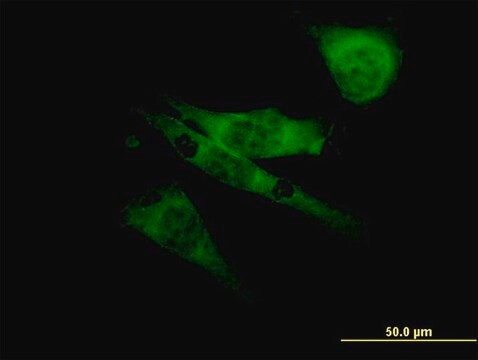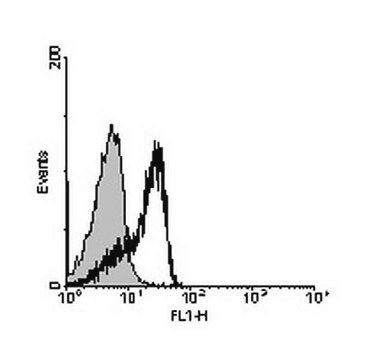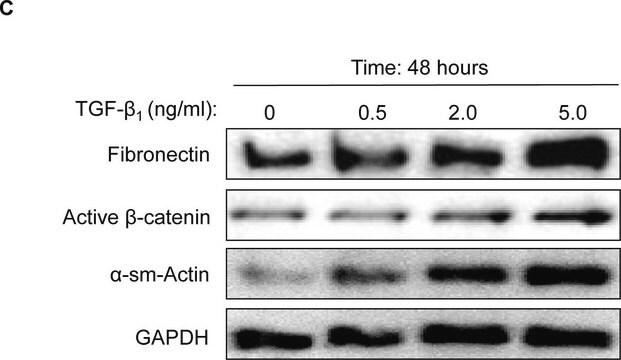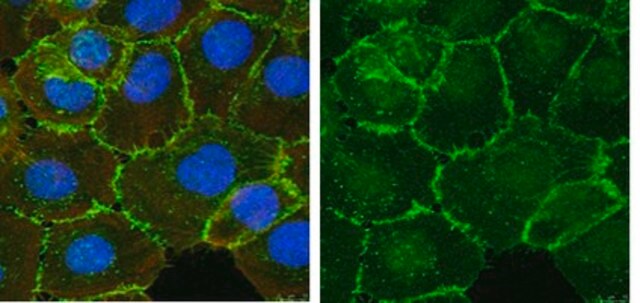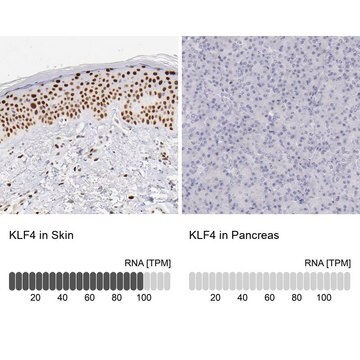MAB2081
Anti-β-Catenin Antibody, clone 5H10
clone 5H10, Chemicon®, from mouse
Sinonimo/i:
Anti-CTNNB, Anti-EVR7, Anti-MRD19, Anti-NEDSDV, Anti-armadillo
About This Item
Prodotti consigliati
Origine biologica
mouse
Livello qualitativo
Forma dell’anticorpo
purified immunoglobulin
Tipo di anticorpo
primary antibodies
Clone
5H10, monoclonal
Reattività contro le specie
rat, human
Produttore/marchio commerciale
Chemicon®
tecniche
immunocytochemistry: suitable
immunohistochemistry (formalin-fixed, paraffin-embedded sections): suitable
immunoprecipitation (IP): suitable
western blot: suitable
Isotipo
IgG1
N° accesso NCBI
N° accesso UniProt
Condizioni di spedizione
wet ice
modifica post-traduzionali bersaglio
unmodified
Informazioni sul gene
human ... CTNNB1(1499)
rat ... Ctnnb1(84353)
Descrizione generale
Specificità
Immunogeno
Applicazioni
Immunohistochemistry on formalin fixed paraffin embedded tissues requires light fixations and citric acid/microwave antigen recovery for staining; In brief, sections of 2μm thickness were treated after deparaffinization with 0.3% hydrogen peroxide in methanol for 30 minutes to inhibit endogenous peroxidase and washed with TBS solution (Tris-buffered saline pH 7.6). To enhance antigen retrieval, sections were microwave-pretreated in 0.01 M citrate buffer solution at 750 W for a 3 minute-cycle period repeated three times; amplified detection methods are recommended.
Immunocytochemistry: Effective for A431 and HT1080 cell lines with acetone or methanol, or light PFA fixation.
Immunoblotting
Immunoprecipitation
Optimal working dilutions must be determined by end-user.
Epigenetics & Nuclear Function
Transcription Factors
Descrizione del bersaglio
Linkage
Stato fisico
Stoccaggio e stabilità
Risultati analitici
A431 and HT1080 cell line extracts
Altre note
Note legali
Esclusione di responsabilità
Non trovi il prodotto giusto?
Prova il nostro Motore di ricerca dei prodotti.
Raccomandato
Codice della classe di stoccaggio
10 - Combustible liquids
Classe di pericolosità dell'acqua (WGK)
WGK 2
Punto d’infiammabilità (°F)
Not applicable
Punto d’infiammabilità (°C)
Not applicable
Certificati d'analisi (COA)
Cerca il Certificati d'analisi (COA) digitando il numero di lotto/batch corrispondente. I numeri di lotto o di batch sono stampati sull'etichetta dei prodotti dopo la parola ‘Lotto’ o ‘Batch’.
Possiedi già questo prodotto?
I documenti relativi ai prodotti acquistati recentemente sono disponibili nell’Archivio dei documenti.
Il team dei nostri ricercatori vanta grande esperienza in tutte le aree della ricerca quali Life Science, scienza dei materiali, sintesi chimica, cromatografia, discipline analitiche, ecc..
Contatta l'Assistenza Tecnica.
